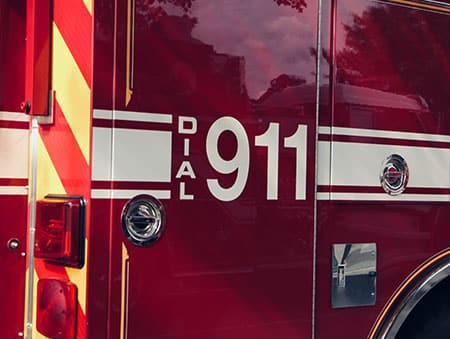According to the Centers for Disease ControlDC, opioids were the primary cause of 68,630 overdose deaths in 2020 alone, which accounts for almost 75% of all drug overdose deaths. Overdosing is the top cause of death for people under 50 in the US. Notably, Fentanyl, Carfentanyl, and Oxycodon are the most widely available opioids in the country.
While encouraging a person suffering from addiction to seek help is a small step in the right direction, we must always be prepared for the worst-case scenario. This entails understanding the signs of an overdose, knowing what to do when it happens, and little everyday things we can do to prevent it.
What are the Signs Someone has Overdosed on Opioids?

- They aren’t responding to pain stimulation. As a pain reducer, opioids, when taken in excess, will overwhelm the Central Nervous System (CNS), and they will be unable to respond to external pain stimuli. Pinch them or press your knuckles along their sternum to gauge their reactions.
- They have shallow breathing. With an overdose, the heart rate and, by extension, the breathing rate of the person are decreased. Consequently, they will either start to rasp or breathe shallowly.
- They have blue or pale lips. Due to a reduced amount of oxygen in their blood, the blood flow to certain body parts will decrease. This will appear as pale or blue lips, eyelids, and nails.
- Their pupils are contracted. As opioids are depressants, the stimuli-responses of the body, in case of an overdose, will be less responsive. This means that their pupils will contract and become smaller.
- They are gurgling or snoring. Difficulty breathing, lack of oxygen to the brain, or passing out can often result in a gurgling sound.
What Can You Do When Someone has Overdosed?
- Start CPR. It is very hard to distinguish between a normal heart attack and an opioid overdose. Opioids are CNS depressants which is why an overdose will reduce breathing rate and oxygen levels. This is why the first step should be to give the individual CPR.
- Give them Naloxone. Currently, Naloxone is the only known drug that can help with opioid overdose. They bind to opioid receptors without activating them and block other opioid molecules from binding with them. Typically, an overdose patient should respond within 3 minutes of administration of Naloxone. It can be administered as an injection or an intranasal spray.
- A second dose of Naloxone. For some long-term opioid users, the initial dose of Naloxone may not be effective or may not be enough. If the person does not respond within a maximum of 5 minutes, consider administering a second dose.
- Put them on their side. The primary cause of death in an overdose is the lack of oxygen reaching the brain and other important organs. Putting the person on their side ensures that there isn’t anything blocking their airway so that their oxygen supply isn’t interrupted by external factors.
- Call 911. Naloxone has a short effect duration, meaning that the overdose symptoms may recur. Thus, getting the individual to a medical care facility at the earliest is important, even though the person feels better after the first dose of the drug.
- Have a doctor on call. If you can, it is always a great idea to have a doctor or other medical professional on call who you can get in touch with during an overdose emergency.
How Can You Prevent an Overdose?
- Using locking medication bags. Locking bags help to prevent the risk of addicts accidentally accessing the medicine and potentially leading to an overdose.
- Removing alcohol from home. Combining opioids with alcohol increases the risk of an overdose. This is because it can increase respiratory depression, and both work together as a cocktail of CNS depressants.
- Early psychological management. Talking to a therapist when early signs and symptoms of addiction show up can be crucial in recovery and preventing further dependency.
Living with an addiction is never easy, especially when it involves our loved ones. But this not the end of the road. Opioid addiction can be curtailed and an overdose prevented.
